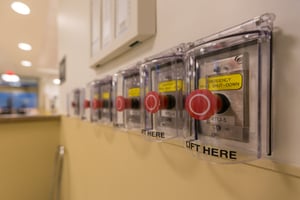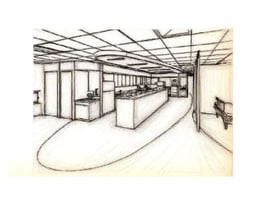In the highly specialized environment of ambulatory surgery centers, the performance of HVAC...
7 Essential Factors to Consider Before Acquiring an Ambulatory Surgery Center
If you were to purchase a used automobile, you would look under the hood, test
drive it and probably have a trusted mechanic thoroughly evaluate the car. If
you are purchasing a used surgery center, it is critical to give it the same
kind of scrutiny. Doing so will protect you from pitfalls like failed
inspections, disruptive shutdowns, loss of revenue, and expensive retrofits.
An architect experienced in surgery center design should review the construction
drawings and inspect the facility as built. The architect will usually bring in
engineers as well to verify the adequacy of the mechanical, plumbing and
electrical systems.
Following is a short list highlighting seven important types of facility issues
to be considered when purchasing an existing center.
1. Determine whether design regulations have changed since the facility was
constructed, and if so, whether the facility will be grandfathered under the
original approvals. Depending on the state, you may have to update the facility
to meet current regulatory standards, more likely if the purchase is an asset
purchase than if a stock purchase. Inquiries of regulators should be handled
discreetly to avoid a possible shutdown if there are serious deficiencies. There
is a greater likelihood of being required to update if the center ceased
operation before changing hands. If you will be seeking accreditation, the
requirements of the accrediting agency must also be taken into account.
2. Even if updating is not mandated, patient safety should be taken into account
when deciding whether or not to upgrade a facility. Whether or not it has been
accepted by authorities, if the emergency power system is overloaded and does
not function properly during a power failure, patient safety could be seriously
compromised.
3. The facility obviously needs the capacity for your anticipated case volume.
Will the numbers of pre-op stations, ORs, procedure rooms and post-op beds be
adequate? There are rules of thumb for all of these, varying by specialty.
4. The ASC must accommodate the specialties you intend to offer. An eye surgery
facility may not meet the needs of a multi-specialty center. A recovery area for
orthopedics would need more stations than for cataract surgery; likewise the ORs
need to be larger. A backup power system designed for local anesthesia would
probably not be adequate for general anesthesia.
5. If the center is to be split away from an adjacent practice office, all of
the functions required for a surgery center must be present or able to be
created. Patient pickup space, waiting room and front office are functions that
are sometimes shared, and it may not be possible to accommodate these after the
fact. Shared utilities may need to be sub-metered or divided when the ASC
becomes a separate business entity.
6. A common trouble spot is the continuity of fire and smoke partitions,
particularly in concealed locations like above ceilings. These are common
targets of officials in life safety inspections and often are the source of
deficiencies, especially in older facilities.
7. The design and condition of the mechanical, plumbing and electrical systems
should be evaluated by knowledgeable engineers. HVAC systems can be particularly
problematic with respect to regulatory compliance, infection control, patient
safety, and physician comfort. We have also too often found that backup power
systems in older facilities do not even meet code requirements in force at the
time of construction, let alone current codes.
In addition to design issues, the condition of major building components should
be evaluated. HVAC equipment, emergency generators, and roofing have finite
lives and can be expensive to replace. Your architectural and engineering
consultants will be able to comment on this matter, and may recommend
inspections by local maintenance contractors.




